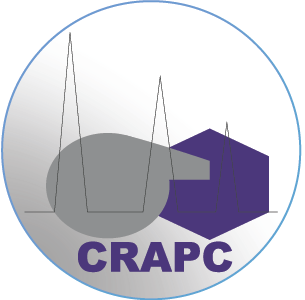Author links open overlay panel
(a)-LEA, Department of Electronics, University of Batna 2, Batna, 05000, Algeria
(b)-Research Scientific and Technical Center on Physico-Chemical Analysis (CRAPC), Tipaza, Algeria
Received 30 August 2020,
Revised 12 December 2020,
Accepted 30 December 2020,
Available online 3 January 2021.
Abstract
In this paper, the optimization, elaboration and characterization of an efficient spectral beam splitter based on a simple RF sputtered ITO/Ag/ITO (IAI) ultra-thin multilayer structure are presented. An experimental investigation assisted by Genetic Algorithm (GA) metaheuristic optimization was carried out to achieve high-performance spectral splitter for tandem solar cell applications. The RF magnetron sputtering method was used to elaborate the optimized IAI structure. The optical and structural properties of the sputtered splitter were also analyzed using UV–Vis-IR spectroscopy and X-ray diffraction (XRD) measurements. It is found that the elaborated splitter structure offers 84% of transparency and a high reflectance of 87% with an optimum cut-off wavelength of 800 nm. This is attributed to the design approach, which leads to promote spectral splitting mechanism by inducing efficient optical modulation. Interestingly, a new Figure of Merit (FoM) parameter, which evaluates the optical splitting performances is proposed. Moreover, a new Perovskite/InGaAs tandem cell is proposed and analyzed to show the impact of the elaborated spectrum splitter on the solar cell efficiency. It is revealed that the investigated solar cell exhibits an improved efficiency approaching 30%. The latter value far surpasses that provided by Perovskite tandem cells. These results indicate that our spectrum splitting approach can open a new pathway towards designing high-performance tandem photovoltaic devices.
Introduction
Recently, the emergence of multi-junction technology at a reasonable cost has allowed a stunning progress in renewable energy resources [[1], [2], [3], [4]]. Perovskite solar cells (PSCs) have attracted an enormous deal of attention to develop low-cost and high-efficiency tandem photovoltaic systems. This is due to the large flexibility, tunable band-gap and lower fabrication cost of perovskite materials [[5], [6], [7], [8]]. Numerous Perovskite tandem architectures based on mechanically stacked or monolithically series-connected designs are proposed to achieve high absorption properties using different bottom-cells based on Silicon, GaAs, CIGS, Ge and CZTS materials [[9], [10], [11], [12], [13], [14], [15], [16], [17]]. However, the recorded efficiencies are still far from the expectations, where all forms of recombination, resistive and optical losses should be suppressed. Intuitively, combining (FAPbI3)0.95(MAPbBr3)0.05 Perovskite absorber showing 1.5eV band-gap with InGaAs narrow band-gap material (0.75eV) can offer a new pathway to develop efficient tandem SC, exhibiting a high photoresponse over the whole solar spectrum [18,19]. Therefore, this calls for a renewed performance assessment of Perovskite/InGaAs tandem photovoltaic device to potentially break the inherent limit associated with single-junction SCs. However, several undesired effects would be occurred when considering the latter tandem structure such as the need for complex interconnection layers, current matching condition, thermalization, lattice mismatching effects, optical and recombination losses that can drastically limit the multi-junction SC efficiency [[15], [16], [17], [18], [19]]. In addition, the bottom cell based on narrow band-gap materials generates much more current density leading to huge power dissipation as heat. This can in turn prevent maintaining low working temperatures, thus affecting the panel reliability against the degradation induced by heating effects. This becomes more severe when light concentrators are incorporated thereby reducing enormously the SC practical efficiency. Particularly, this effect is common for PSCs technology, where stability issues are more pronounced. One approach to avoid these undesired effects is to use spectral beam splitter technique, which has enabled higher efficiencies and regarded readily accessible to the photovoltaic industry [[20], [21], [22], [23]]. The optical splitter separates the incident sun-light into some parts of spectral ranges and each part is directed to individual sub-cells whose band-gap energies correspond to the appropriate spectral range. Numerous splitting systems were proposed in the literature such as prismatic lens, dichroic coating and luminescence solar concentrator [[20], [21], [22], [23], [24], [25], [26], [27], [28]]. Nevertheless, it is still complex, sophisticated and time consuming to fabricate reliable and efficient beam splitter systems for tandem photovoltaics, where high number of interference layers is required to achieve suitable cut-off wavelength, reduced optical losses and sloped transition [[24], [25], [26]]. Accordingly, using adequate thin-film materials with reduced interference layers, while ensuring high splitting performances can open up the route for the elaboration of high-efficiency tandem SCs at low-cost. In this context, several multilayer-based structures have been developed for thermal-solar hybrid systems demonstrating a great promise in achieving suitable splitting characteristics and high energy harvesting performances [[25], [26], [27], [28], [29], [30], [31], [32], [33], [34], [35], [36], [37], [38]]. However, they did not prove any benefit over the conventional ones in terms of cut-off wavelength tunability and optical properties. These effects make them too upstream to yet contemplate a potential deployment in tandem photovoltaic systems. To the best of our knowledge, no investigations based on a strategic combination between ITO/Ag/ITO (IAI) multilayer spectrum splitter and a new Perovskite/InGaAs tandem SC structure were conducted to achieve superior conversion efficiency at low-cost. To do so, in this paper, an experimental study assisted by systematic optimization approach was carried out for elaborating an efficient IAI multilayer structure. The optimized structure was prepared by RF magnetron sputtering technique and its optical and structural characteristics were analyzed using UV–Vis-IR and XRD measurements. It was revealed that the elaborated IAI multilayer spectrum-splitter exhibits 84% of transparency and a reflectance of 87% with an optimum cut-off wavelength of 800 nm, which has led to achieve a high-efficiency Perovskite/InGaAs tandem SC of 29.6%. Therefore, the proposed design and elaboration approaches not only provide promising techniques to optimize the performance of IAI multilayer spectrum-splitters by using metaheuristic methods, but also open up the way to develop high-efficiency tandem SCs


